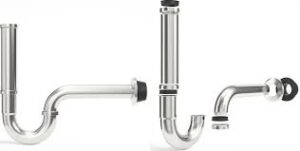Introduction:
The increasing demand for sustainable water management has spurred the exploration of alternative methods to lift water without relying on traditional pumps. A simple yet intriguing solution lies in the use of a siphon, a device that operates on fundamental principles of atmospheric pressure and gravity. In this detailed guide, We will see How to pump the water without electricity (Siphon). Also we will delve into the science behind siphons, meticulously explore the required materials, provide step-by-step instructions for setup, and discuss various applications, all presented in an accessible and easy-to-understand language.
https://www.youtube.com/watch?v=p-hQmJcOE4c

I. Understanding the Basics of Siphons
A. Defining a Siphon:
The siphon is a tube or pipe facilitating liquid flow uphill without external pumping.
It operates on the principles of atmospheric pressure and gravity.
B. How a Siphon Works:
- Atmospheric Pressure and Gravity:
Atmospheric pressure pushes the liquid into the siphon.
Gravity assists in pulling the liquid downhill, creating a continuous flow.
2. Overcoming Gravity with Atmospheric Pressure:
Liquid moves upward against gravity due to the pressure difference between source and destination points.

II. Materials Needed:
A. Essential Components:
- Tubing:
– Consider PVC, rubber, or flexible plastic materials.
– Choose the tubing size based on intended use and flow rate requirements.
- Container:
– Ensure containers are clean and suitable for the liquid being transferred.
– The destination container should be at a lower elevation than the source.
B. Optional Components:
- Hose Clips or Clamps:
– Used to secure tubing connections and prevent leaks.
– Ensure a tight seal for efficient siphon operation.
- Weights (for Submersible Siphons):
– Useful for maintaining tubing in a submerged position.
– Prevents air from entering the siphon.
III. Choosing the Right Location:
A. Height Difference:
- Importance of Elevation:
– A higher source container creates potential energy for the siphon.
– Greater height difference allows for more efficient water transfer.
- Ideal Scenarios for Siphon Applications:
– Agriculture, gardening, emergency water transfer, and more.
B. Accessibility:
- Ensuring Easy Access for Setup and Maintenance:
– Choose a location that allows for convenient setup and adjustments.
– Accessibility is crucial for troubleshooting and maintenance.
- Avoiding Obstacles and Bends in the Tubing:
– Keep the tubing as straight as possible to maintain a smooth flow.
– Minimize obstacles that could impede the siphon’s operation.
IV. Setting Up the Siphon:
A. Preparing the Tubing:
- Measuring and Cutting the Tubing to the Desired Length:
– Measure the distance between source and destination containers.
– Cut the tubing to an appropriate length, considering any bends or obstacles.
- Ensuring a Clean and Debris-Free Interior:
– Rinse the tubing thoroughly to remove any debris or contaminants.
– A clean interior promotes an unobstructed flow.
B. Filling the Siphon:
- Submerging the Tubing Completely:
– Ensure the tubing is fully submerged in the source container.
– Submersion helps initiate the siphoning process.
- Removing Air Bubbles for Optimal Performance:
– Allow water to flow through the tubing to displace air.
– Ensure a continuous flow to eliminate air pockets.
C. Starting the Siphon:
- Initiating the Flow with Manual Suction:
– Create a vacuum by sucking on the tube or using an alternative method.
– Once the flow begins, gravity takes over, maintaining the siphon.
- Allowing Gravity to Take Over:
– Once the siphon is started, gravity ensures a continuous flow.
– Monitor the flow rate and make adjustments as needed.
V. Tips for Successful Operation:
A. Maintaining Consistent Flow:
- Monitoring Water Levels Throughout the Process:
– Regularly check the source container’s water level.
– Adjust the siphon if necessary to maintain a consistent flow.
- Adjusting Tubing Placement for Optimal Results:
– Experiment with tubing placement to maximize efficiency.
– Ensure the tubing remains submerged for uninterrupted operation.
B. Troubleshooting Common Issues:
- Addressing Air Leaks and Interruptions:
– Inspect tubing connections for leaks.
– Address interruptions by adjusting tubing or reinitiating the siphon.
- Ensuring a Smooth and Continuous Siphon Flow:
– Minimize bends and kinks in the tubing.
– Clear any obstacles that may impede the siphon’s operation.
VI. Applications of Siphons:
A. Irrigation Systems:
- Watering Gardens and Crops:
– Efficiently distribute water in agricultural settings.
– Ideal for areas with limited access to electricity.
- DIY Aquaponics:
– Lift water between fish tanks and grow beds.
– Create a sustainable closed-loop system for aquaponic gardening.
B. Emergency Water Transfer:
- Moving Water During Power Outages or Pump Failures:
– Serve as a reliable backup for water transfer during emergencies.
– Operate without the need for electricity.
- Ensuring Access to Water in Critical Situations:
– Provide a low-tech solution for accessing water in challenging circumstances.
– Simple and effective for emergency water supply needs.

Conclusion:
In conclusion, the use of a siphon offers a simple and accessible way to lift water without traditional pumps. By understanding the scientific principles, carefully selecting materials, and following a systematic setup process, individuals can harness the power of a siphon for various applications. Whether it’s for irrigating crops, supporting DIY aquaponics, or serving as an emergency water transfer system, the simplicity and efficiency of the siphon make it a valuable tool in the quest for sustainable water solutions. As we continue to explore eco-friendly alternatives, the age-old concept of the siphon proves that sometimes, the most effective solutions are rooted in the natural flow of the world around us.
